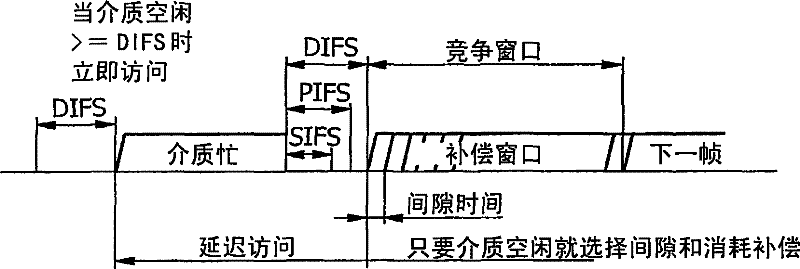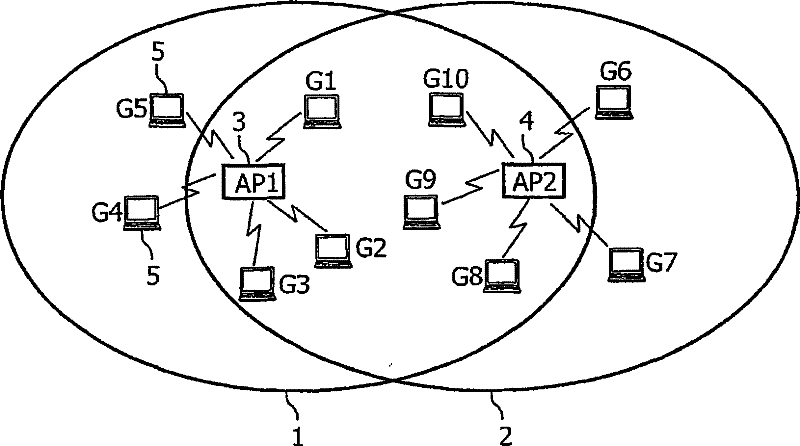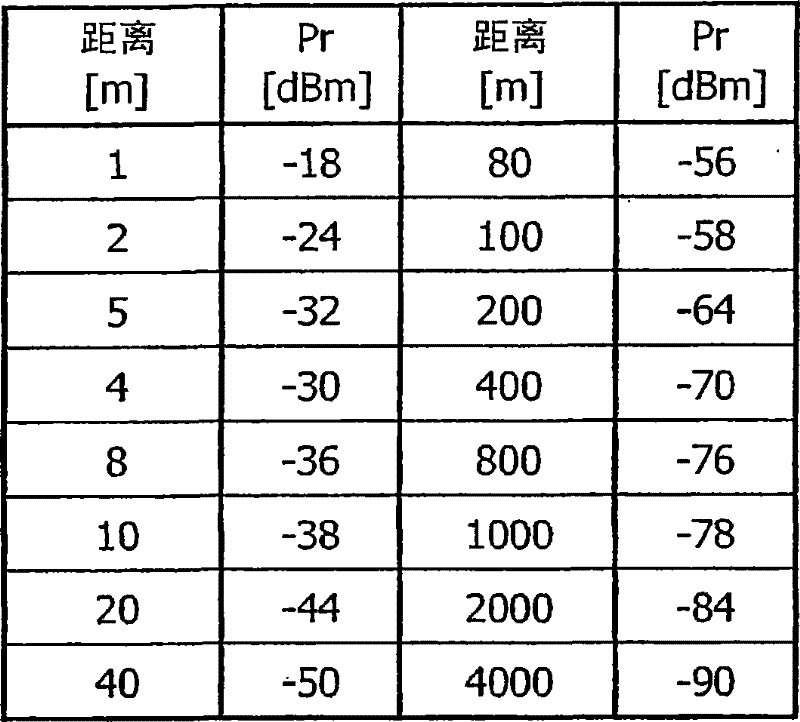Method and arrangement for reducing the mutual interference of network subscribers in radio networks
A technology for network users and mutual interference, applied in the field of devices and devices for reducing the mutual interference of network users in a radio network, can solve problems such as cell conflict, difficulty in adjacent cells, unavailability of WLAN equipment, etc., to increase data throughput, The effect of reduced transmission power and reduced interference
- Summary
- Abstract
- Description
- Claims
- Application Information
AI Technical Summary
Problems solved by technology
Method used
Image
Examples
Embodiment Construction
[0041] figure 1 The procedure for randomly allocating idle channels defined by the IEEE 802.11 standard is shown. When the current data transmission on the channel under study has ended, ie the "medium busy" phase has ended, then the time portion referred to in the standard as the "DIFS" phase follows. This is followed by the actual contention window, in which a station wanting to occupy the channel sends a channel request. To avoid collisions, ie when two stations send their channel requests at the same time and thus interfere with each other, the channel requests are randomly delayed. Therefore two or more stations do not transmit at the same time, because the transmission time of the corresponding channel request of each transmitter is determined by the end time of the previous DIFS phase plus the slot time (the position of which is determined by the random generator OK) to calculate. Channels are assigned to the station that sends the channel request first. All other s...
PUM
 Login to View More
Login to View More Abstract
Description
Claims
Application Information
 Login to View More
Login to View More - R&D
- Intellectual Property
- Life Sciences
- Materials
- Tech Scout
- Unparalleled Data Quality
- Higher Quality Content
- 60% Fewer Hallucinations
Browse by: Latest US Patents, China's latest patents, Technical Efficacy Thesaurus, Application Domain, Technology Topic, Popular Technical Reports.
© 2025 PatSnap. All rights reserved.Legal|Privacy policy|Modern Slavery Act Transparency Statement|Sitemap|About US| Contact US: help@patsnap.com



